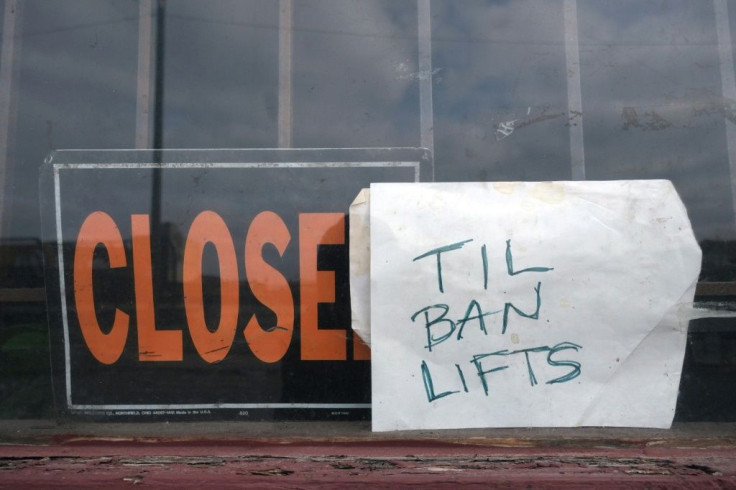Unemployment Claims Reach Highest Level In US History, Over 3.2 Million Out Of Work

Last week marked the largest increase in initial unemployment claims in history. Unemployment claims reached 3.28 million for the week ending March 21, up more than 3 million from the previous week due to the coronavirus.
“This explosion of first-time claims for unemployment benefits, topping 3 million, demonstrates the toll unprecedented efforts to contain the deadly coronavirus outbreak take on the job market,” Mark Hamrick, senior economic analyst at Bankrate.com told International Business Times.
“There will be more to come in the weeks ahead. While the record number of claims is shocking, it is not totally surprising. For days now, we’ve heard how state systems were overwhelmed by the rush to file claims after people were separated from work,” he added.
According to the U.S. Department of Labor, the previous highest level of unemployment claims was in October 1982 when claims reached 695,000. Nearly every state cited the impact of COVID-19 as the cause of unemployment, with the accommodation and food service industries particularly impacted.
Other industries affected by the coronavirus include healthcare, social assistance, arts, entertainment, recreation, transportation, warehousing and manufacturing industries.
In 2019, there were 190,023 unemployment claims during the same timeframe.
“A full 2.24% of all Americans covered by the program reached out for aid in just a single week, an elevenfold increase in claims from last week’s already elevated levels,” Andrew Stettner, senior fellow at The Century Foundation and a leading unemployment insurance expert told International Business Times.
“Worse, this torrent of layoffs and furloughs will only grow in the coming weeks, as one in four Americans are now under a stay-at-home order. As economist James Parrott and I projected yesterday, this tsunami could soon lead to nearly 10 million new workers who need to receive unemployment checks to stay afloat.”
For the week ending March 14, the largest increase in initial claims were in California, up 14, 221, Washington, up 7,624, Nevada, up 4,047, Pennsylvania, up 3,212, and Massachusetts, up 2,737. The largest decreases in the same week came from Arkansas, down 461, Alabama, down 341, Puerto Rico, down 171, West Virginia, down 168, and Maine, down 81.
If the COVID-19 stimulus package passes the House as is, unemployed workers will receive an extra $600 a week for the next four months in addition to their state’s unemployment insurance benefits, which range in pay from $200 to $550 a week and are paid for 12 to 28 weeks, depending on the state.
In the bill, unemployed workers affected by the coronavirus include those that are unemployed, partially employed, or unable to work due to the impact of COVID-19 as well as independent contractors, the self-employed and gig economy workers.
“The massive relief legislation approved by the Senate raises unemployment checks by $600 a week, more than double the national average,” Hamrick said. “The financial aid serves to help displaced workers to do their part to contain the virus by staying at home.”
© Copyright IBTimes 2025. All rights reserved.





















